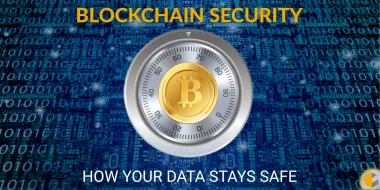
If you’ve given our two part series on what Bitcoin, and by extension, cryptocurrencies really are, you’re probably sold on the idea. The only issue is, how exactly do you buy cryptocurrency? Unlike stocks and other securities, purchasing cryptocurrency is a little more complicated due to the decentralised nature of the blockchain. Fortunately, in this guide, we’ll show you step-by-step how you can get your very own stash of crypto set up in no time.
Do you want to buy Bitcoin, or do you just want to invest?
If you’ve been following financial news at all in the last few months, you’ve probably heard of the massive increases in various cryptocurrencies like Bitcoin, Ethereum, Litecoin etc. While we always recommend actually holding the keys to the cryptocurrency you own, if you’re only looking to make speculative moves and want an easy and convenient way to get started, this is definitely a viable option.
If you already have an account with some brokerage firms, you can “buy” popular cryptocurrencies like Bitcoin. However, you won’t actually “own” the cryptocurrency, meaning that you won’t be able to transfer whatever you buy from Robinhood to a private wallet.
Instead, you’re basically investing in a fund that tracks the price movement of the cryptocurrency of interest. Other payment services companies, such as Square and PayPal, also offer the option to purchase cryptocurrency in this way.
Select the Exchange You’d Like to Do Business With
If you’d actually like to own the crypto you purchase, then the first thing you’ll have to do is decide which cryptocurrency exchange you’d like to start using. Cryptocurrency exchanges are institutions that allow you to buy, sell and even hold cryptocurrency. For Australian buyers, the exchanges I use and recommend to family and friends are:
Secondly, cryptocurrency exchanges differ greatly in how they treat user privacy and anonymity. As you already know, Bitcoin and most other cryptocurrencies are based on a decentralised, largely anonymous platform. Many cryptocurrency exchanges allow users to remain completely anonymous, respecting this platform, but many other exchanges require some form of identity verification. Many of the largest and most commonly used international exchanges, such as Binance and Coinbase, require some form of identity verification. No matter which exchange you ultimately decide to use, always make sure to follow safe internet practices, such as using two-factor authentication and hard to crack passwphrases.
Getting Started with the Exchange
Much like setting up an account with most brokerage accounts, you’ll want to get some documents in order, such as a driver’s license and sometimes even employer details and source of funds. After a short verification process that’ll be conducted by the exchange, you’ll be able to get your payment account connected to the exchange. You can choose to directly connect your bank account, debit card, or even your credit card to the cryptocurrency exchange. We generally advise against using credit cards for this sort of purchase as many cryptocurrencies are highly volatile.
It may also be important to check that your bank approves cryptocurrency related purchases. While this often isn’t an issue, many banks are hesitant to approve purchases of cryptocurrency.
Time to Buy
At this point, you’ve already selected your exchange and set up your payment option. Now, you’re free to make a purchase of whatever cryptocurrency is available on the exchange. These days, cryptocurrency exchanges are very modern and well-developed, offering many services that were once in the express domain of traditional brokerage firms. The basic options, such as market and limit orders, are available at nearly all cryptocurrency exchanges. Some offer a wider array of options, such as stop losses and take-profit orders.
Beyond just the various kinds of orders that are offered are purchasing plans and recurring investment plans. Coinbase, for example, has an option for users to set up a recurring payment system in which a set amount of cryptocurrency is purchased at a specific interval.
That’s all you really need to get started on buying and selling crypto! There’s quite a bit more to consider with regard to safety and wallets, so make sure to keep an eye out for our next piece, in which we’ll be breaking down for you everything you’ll ever need to know about storing your newly purchased crypto.
Cryptocoin Disclaimer
This article may contain referal links, which assist us in managing the website and generating more content. If referal links are used, they will only be for products or services we personally use and recommend.
Read about our transparency requirements.
Editor-in Chief
Related Posts






Subscribe to our newsletter!
Information


